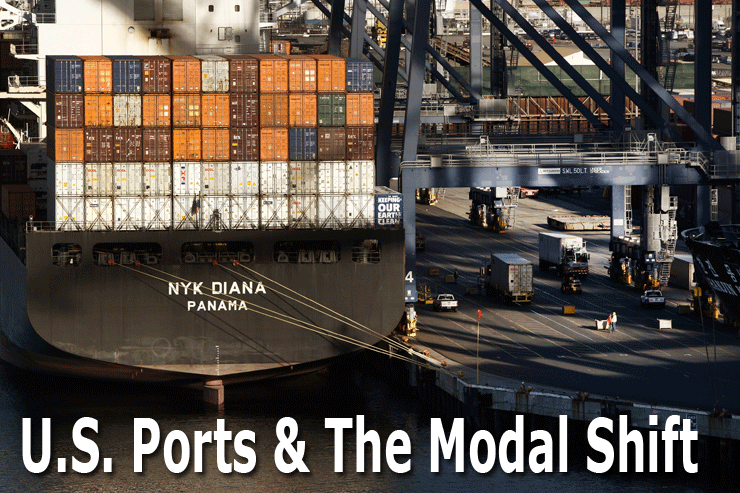 |
 |
 #INTHEAIREVERYWHERE |
| Vol. 14 No. 53 | Monday
June 29, 2015 |
The
union-employer dispute at U.S. West Coast
ports, which left ships waiting in port
and cargo and equipment stranded across
the nation for much of the last year, finally
ended in May when a new 5-year labor agreement
was signed between the International Longshore
and Warehouse Union (ILWU) and the Pacific
Maritime Association (PMA). |
 |
The
Working Group of the ICAO Dangerous Goods
Panel (DGP), which convened in Montreal,
Canada, earlier this year, bears some
closer examination, as the agenda included
working papers and recommendations due
for implementation into the 2017-2018
version of ICAOs “Technical Instructions
for the Safe Transport of Dangerous Goods
by Air.”
|
 |
 For Pooja Ahluwalia, business manager, Red Express & Logistics, her office is the place she feels completely at home. That is where all the action resides and that is, incidentally, where she feels “very comfortable in this male-dominated cargo industry.” After all, Ahluwalia has spent more than a decade dabbling with consignments. The initial years—she was candid enough to accept (and admit)—were tough. In fact, when she joined the industry, she had formed a mental picture. “Cargo,” she said, “is perceived as a laborious and manual job, and thus not appropriate for women.” Later, she thought to herself: “More than half of our agricultural sector is dominated by women. So why this gender divide?” Such pre-conceived ideas are changing very quickly. Indian women, said Ahluwalia, are hard working, committed, and capable of any job whether it asks for physical, intellectual, or emotional strength. That is why she feels at home in “this male-dominated industry.” As for regular interactions with male colleagues, Ahluwalia termed it as a “mixed bag,” but encouraging, though over the years “I have seen a huge change in acceptance of women as leaders.” Today, she is confident about the growth of her female colleagues and is certain that they will be able to stand their ground with men around them. That is because there is a “growing recognition for diversity in this industry” and that calls for exciting times. She has a message for employers: “Integrating women into this industry would only help to utilize the great volume of female talent available,” she said. Her advice to aspiring women who want to take the cargo industry as a career option? “Feel confident and powerful about yourself and be outstanding in what you do.” For the lady who has spent more than a decade in the industry, “the journey has been extremely challenging and daunting.” Yes, she has had some battles, but “my belief that hard work and aptitude are the two key qualities to survive, grow, and succeed in any field has helped me to do well,” she said. Every time Ahluwalia sees consignments headed out to some corner of the world, she feels excited. She confided, “Even after so many years, the unexpected nature of this business, new possibilities, and the opportunity to learn something new every day excites me,” she said with a smile. Tirthankar Ghosh |
Visakhapatnam
International Airport, (IATA: VTZ –
ICAO: VOVZ) located in the port city of
the same name on the eastern coast of India
and managed by the government-controlled
Airports Authority of India (AAI), is getting
some notice lately. |
|
If
You Missed Any Of The Previous 3 Issues
Of FlyingTypers |
| Forward this email to a friend |
| Update Profile To continue receiving FlyingTypers |
Publisher-Geoffrey
Arend • Managing Editor-Flossie Arend
• Associate Publisher/European Bureau
Chief-Ted Braun Film Editor-Ralph Arend • Special Assignments-Sabiha Arend, Emily Arend • Advertising Sales-Judy Miller |
|



 But
there could be a short-term upside. “The
prospects of missed sailings in the peak
season as ocean carriers look to redress
the supply-demand imbalance could potentially
prolong the blip for a small number of high-value
goods,” added the report.
But
there could be a short-term upside. “The
prospects of missed sailings in the peak
season as ocean carriers look to redress
the supply-demand imbalance could potentially
prolong the blip for a small number of high-value
goods,” added the report.


 Vital
Views 1975-2015
Vital
Views 1975-2015  Christopher
Coppersmith, president and CEO,
Target Logistic Service, had
this to recommend: “We
must acquire new thinking, generate
new ideas and concepts that
will provide fresh strength
to this once fastest growing
sector of the transport industry.
We also must relearn geography.
China is not the only country
on the air cargo map. In our
zeal to satisfy shipper needs
between the U.S. and the one
billion Chinese with their dynamic
economy, we are in danger of
forgetting the other five billion
occupants on this planet.”
Christopher
Coppersmith, president and CEO,
Target Logistic Service, had
this to recommend: “We
must acquire new thinking, generate
new ideas and concepts that
will provide fresh strength
to this once fastest growing
sector of the transport industry.
We also must relearn geography.
China is not the only country
on the air cargo map. In our
zeal to satisfy shipper needs
between the U.S. and the one
billion Chinese with their dynamic
economy, we are in danger of
forgetting the other five billion
occupants on this planet.” Scott
Dolan, president – air cargo,
United Airlines, commenting on
the forces of surface competition:
“let’s face it, in
an era of rising fuel costs and
more stringent security requirements,
shippers are looking towards alternative
modes of transportation. Because
of these factors, ocean, rail,
and ground are costing the air
cargo industry millions of dollars
in lost revenue, and this pressure
will only increase in the future.
Our continued success depends
on executing flawlessly and finding
ways to create added value for
our customers.
Scott
Dolan, president – air cargo,
United Airlines, commenting on
the forces of surface competition:
“let’s face it, in
an era of rising fuel costs and
more stringent security requirements,
shippers are looking towards alternative
modes of transportation. Because
of these factors, ocean, rail,
and ground are costing the air
cargo industry millions of dollars
in lost revenue, and this pressure
will only increase in the future.
Our continued success depends
on executing flawlessly and finding
ways to create added value for
our customers.

